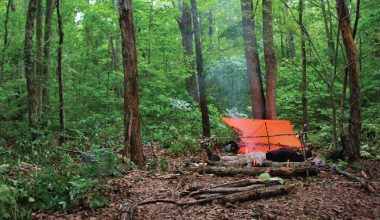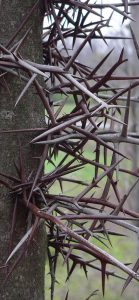
Everybody has a favorite burglar alarm: bells, sirens, barking dogs. My favorite was the pitiable cries of a prowler who stumbled headlong into my strategically planted Teddy-Bear Cholla cactus. Barrier plants, as landscape architects and security pros call them, cover the spectrum from ones that warn a trespasser “Going here will be painful,” to ones that tell an intruder, “Thanks for the DNA samples, but don’t you think you should now run along home or to a medical facility?”
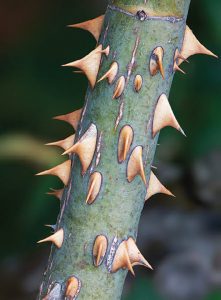
Many years ago, I energetically bent over a pickup tailgate to lift a heavy box and pushed the back of my jeans into the lower frond of a Century Plant. The hard 1/8-inch spine went through my wallet and impaled one itinerant journalist. This is not to illustrate how thin a scribe’s wallet generally is, but how robust and potentially hazardous thorns on some barrier plants can be.
A few years later, Rich Davis invented the Second Chance vest, a real lifesaver, but on early models reportedly vulnerable to an ice-pick attack. Of course I had to try it, and yes, you could shove a Century Plant tip through a “bulletproof” vest.
Yet Century Plants are a common, attractive and totally acceptable landscape plant to those who live in warmer climates. The edges of the leaves are also lined with smaller curved thorns in such a fashion that if you fall into the plant, you will be cut to shreds getting out.
There is no doubt that some plants can be hazardous to your health if you don’t do things their way, and you can harness that ability for your own home security almost as easily as a packrat builds his nest of cactus shards.
Table of Contents
EASY SECURITY FOR TODAY
Such passive-aggressive measures as planting barrier plants are worthwhile for the security of your home environs today, no matter what sort of worstcase scenario you may envision for a future time.
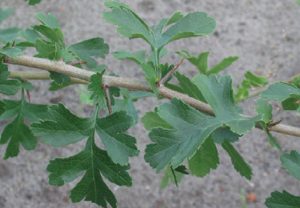
Discrete but capable plantings will be more effective in most instances than expensive technology, because they do not attract attention like a row of razor wire that announces, “I am protecting something you probably want.” Unfriendly plants will at least encourage various sociopaths to try their luck somewhere else, with you never even having to engage them in conversation.
HIGHLY DECORATED GUARDS
Aside from their inherent effectiveness and independence from utility hookups and zoning restrictions, security plantings are socially acceptable, even politically correct. Some municipalities have sponsored seminars on how to effectively use plants for home defense. Historical precedence is on the side of security plantings as well— because they work.
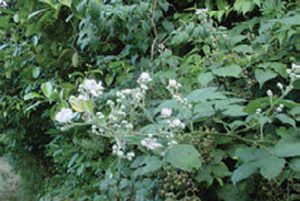
Long before technology made modern fencing materials available, anybody with a site to protect knew it was not nice to fool Mother Nature and started from the ground up, with plantings that varied from unfriendly to hazardous.
Virtually every venue offers a local natural selection of unobtrusive yet effective barrier plants, so you’re not limited to Aunt Martha’s heirloom rose bush, as effective as roses can be. Today the selection of proactive barrier plants offers something for every site, in every clime. Most are attractive plants that can be worked into landscaping without even making their defensive potential obvious.
But some, like the wonderfully effective Hardy Orange, are so obviously hostile that when their leaves drop in winter, their purpose can be as apparent as barbed wire.
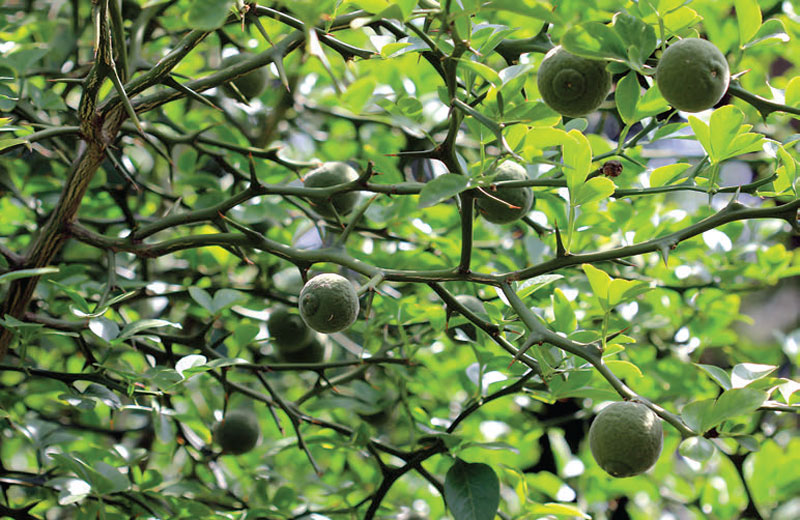
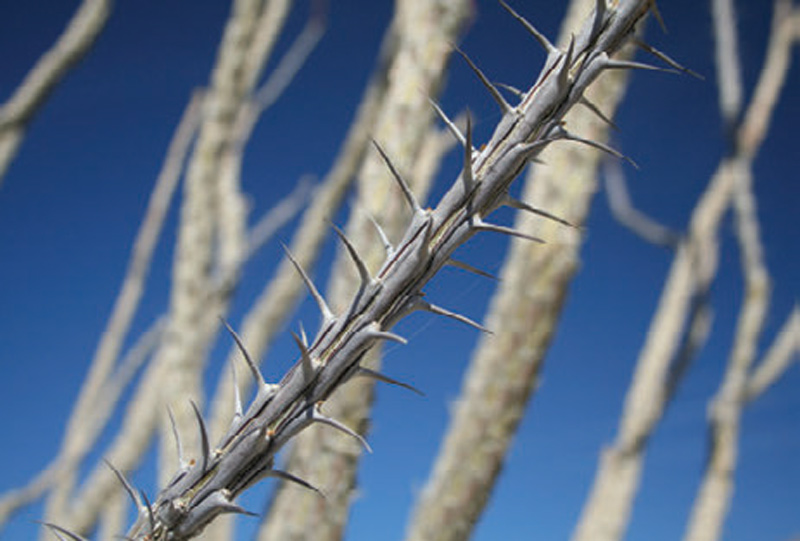

BOTH WAYS
One constant consideration is that the plants be hazardous only to intruders, not to people who belong there. For instance, low plantings in front of windows should be big enough to prevent creeping and loitering, but not so big they can’t be jumped from the inside if used as a fire exit, and not so large as to hide a burglar breaking in that window.
They should not block pathways, just ensure that only authorized pathways are used. They should not present a hazard to invitees such as mail carriers, meter-readers, guests, or emergency medical workers—but such folks seldom loiter under a window, climb a drainpipe, or vault over your back fence.
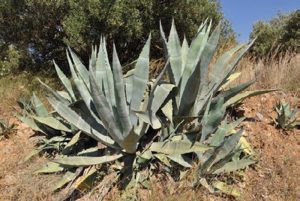
Obviously, we don’t want to use barrier plants that may impede normal public access routes or harm innocent passersby. Intruders seek the shadows, but dark areas that might otherwise give them comfortable access can readily be made impassable. Use common sense.
Barrier plants help define boundaries around homes and in gardens. Thoughtful selection and placement of barrier plants are crucial to their effectiveness, but once installed there is scant else as effective.
POINTS TO CONSIDER
Consider if plant size will create hiding places and block views. Will the plant prevent your own easy movement? Choose species and locations thoughtfully, and when you can, work with existing structures, such as
plants with barbs and thorns at the base of a privacy fence or along walls or trellises. For hedges, choose defensive plants that are thorny or

difficult to walk through and strongly upright.
Whether they are a deterrent or a true barrier depends on species. The hawthorn hedges in France stopped the Allies’ Sherman tanks after the Overlord invasion. Growing a prickly hedgerow and installing a serious gate may be a great combination for eliminating unwelcome visitors in an urban setting. Always plan your access for maintenance.
At a property’s edge, barriers comprising a belt of hawthorn, holly, locust, Hardy Orange, or tightly spaced agave are more than just a “living fence” that draws a line in the sand. And a pair of wire-cutters will not defeat them.
At a property’s center, replace the ivy that climbs a wall (and can aid access to second-story windows or roofs) with good-looking and very thorny pyracantha. Examine your particular property through the eyes of an intruder.
Decide which areas are vulnerable, then plan and plant accordingly. Barrier plants never sleep.





